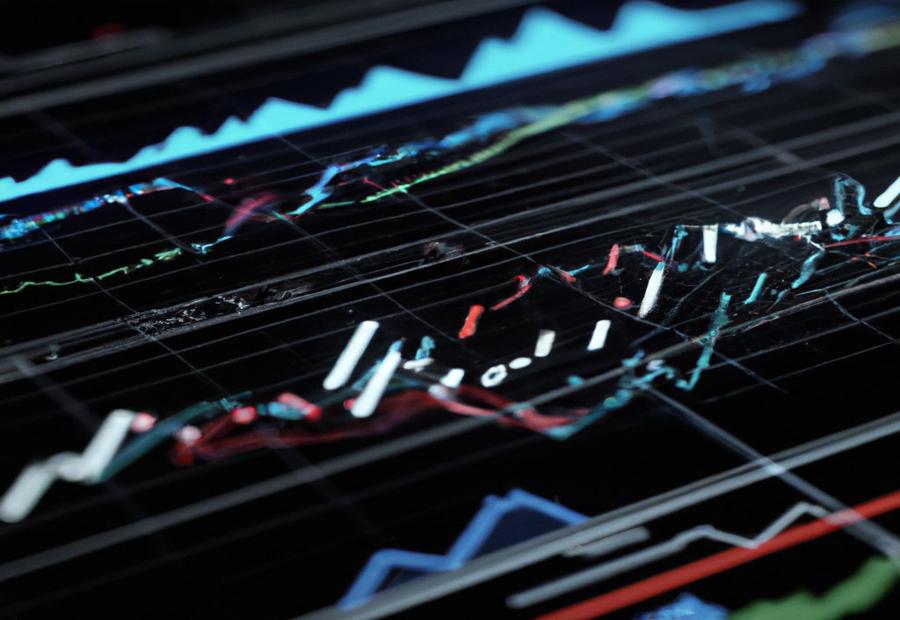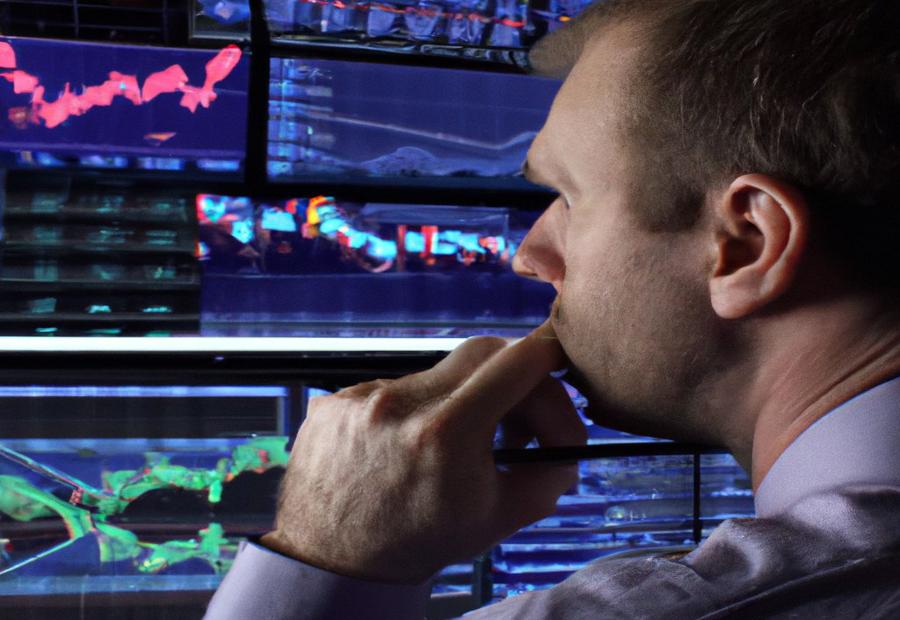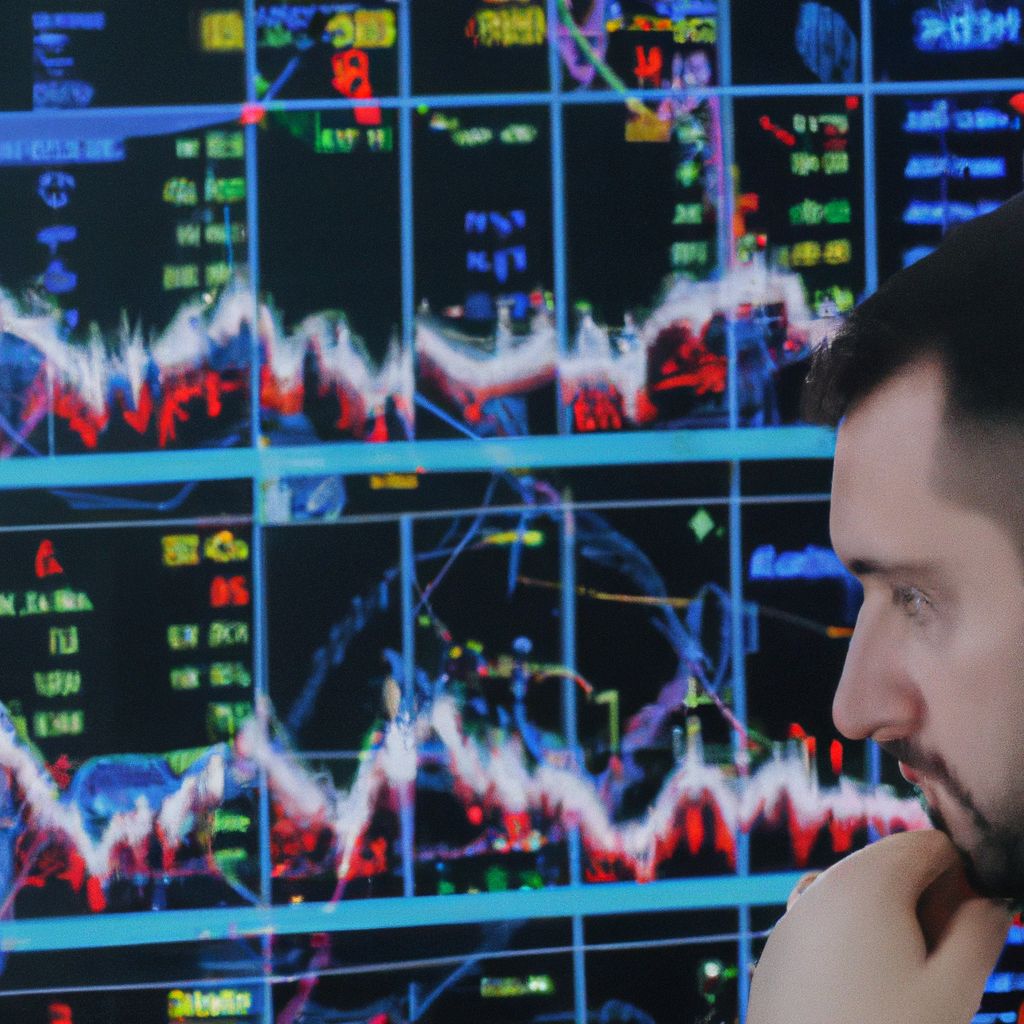Key takeaway:
- Advanced Forex Trading involves understanding the intricacies of the Forex market and utilizing technical analysis for decision-making.
- Types of advanced Forex trading techniques include cross currency triangulation, counter trading, hedging Forex, position trading, order block trading strategy, scalping trading strategy, and Ichimoku cloud trading strategy.
- To start trading using advanced Forex techniques, it is important to find the right Forex broker, build expertise in Forex, and implement advanced techniques.
- Risk management is crucial in Forex trading, and understanding fundamental analysis and dealing with volatile market conditions are important aspects to consider.
- Additional resources and expert advice can provide valuable insights and guidance for traders looking to enhance their advanced Forex trading techniques.
Introduction to Advanced Forex Trading

Photo Credits: Www.Reviews360D.Com by Logan Jackson
Welcome to the world of advanced forex trading, where we will explore the ins and outs of this dynamic market. Gain insights into understanding the forex market, harness the power of technical analysis, and discover the numerous benefits that come with advanced forex trading. Prepare to dive deep and elevate your trading skills to new heights. Are you ready to unlock the potential of advanced forex trading? Let’s get started!
Understanding the Forex Market
The foreign exchange market – or forex – is a worldwide marketplace for trading currencies. Participants from around the planet buy, sell, and swap currencies. To be successful at advanced forex trading, one must know the factors that affect currency prices – economic indicators, geopolitical events, and market sentiment. By observing these closely, traders can make sound decisions and profit from trading opportunities.
Analyzing charts and utilizing technical analysis tools are key in advanced forex trading. This helps traders spot patterns, trends, and signals that can guide their decisions. Concepts like support and resistance levels, trendlines, and candlestick patterns are vital for effective price chart analysis and making profitable trades.
The forex market has the advantage of high liquidity and being available 24/7. This means traders can take advantage of this by employing techniques such as cross-currency triangulation. This strategy involves capitalizing on disparities in currency exchange rates between three different currency pairs. By calculating these exchange rates accurately, traders can gain from market imbalances.
To be successful in advanced forex trading, one must find the right forex broker who offers competitive spreads, reliable trade execution, and a user-friendly trading platform. Furthermore, gaining expertise in forex requires continual learning and practicing with demo accounts. Advanced techniques require discipline and patience, as traders wait for ideal entry points based on their strategies.
Risk management is also important in forex trading to protect capital from losses. Traders should use risk management tools, such as stop-loss orders, to minimize potential losses. Appropriate position sizing techniques are also crucial for effective risk management.
Technical analysis is like a secret decoder ring for the forex market. It can uncover its hidden messages and give traders an edge – or just give them a reason to over analyze everything.
Importance of Technical Analysis
The market is becoming complex. Technical analysis is essential for advanced forex trading. It helps traders identify patterns and trends, which can predict future price movements. This way, they can make informed decisions and maximize their chances of success.
Technical analysis is indispensable for trading strategies. It lets traders find profitable opportunities, set stop-loss orders, and confirm findings from fundamental analysis. Through this, they can take advantage of favorable conditions.
Technical analysis also provides insight into support and resistance levels. These help traders manage risks and minimize losses. Together with fundamental analysis, technical analysis confirms trading strategies. By using both methods, traders can strengthen their strategies and increase their chances of success.
In summary, technical analysis is key for advanced forex trading. It lets traders identify opportunities, manage risks, and confirm their fundamental analysis. It is invaluable in giving traders insights into market trends and patterns.
Benefits of Advanced Forex Trading
Advanced Forex Trading offers great benefits to experienced traders. Such as:
- Profit potential increase: By using advanced techniques, traders can make more money in the forex market. These techniques let them time their trades well and capitalize on market trends.
- Risk management improved: Advanced forex trading strategies also offer improved risk management. E.g. hedging and position trading to limit exposure to volatile markets.
- Trading opportunities expanded: Advanced forex trading gives traders access to a wider range of trading opportunities. E.g. cross currency triangulation and counter trading.
- Analysis more precise: Technical analysis is key in advanced trading, letting traders make more precise predictions about market movements. This can lead to better decisions and more successful trades.
- Continuous learning & growth: Engaging in advanced forex trading requires continuous learning and skill development. This provides constant challenge and opportunity for personal growth.
In addition, advanced forex trading provides exclusive advantages not discussed before. For instance, with order block trading strategy, traders can find out where institutional investors enter or exit positions. This info is invaluable for making trade decisions.
Don’t miss out on the potential of advanced forex trading. Take your skills and knowledge to the next level by using its techniques! From cross currency triangulation to scalping strategies, advanced forex trading techniques will keep you on your toes and your bank account guessing.
Types of Advanced Forex Trading Techniques

Photo Credits: Www.Reviews360D.Com by Albert Young
Explore the various types of advanced Forex trading techniques that can take your trading skills to the next level. From cross currency triangulation to scalping trading strategies, this section uncovers the secrets behind each technique, providing you with valuable insights into their benefits and applications. Whether you’re interested in counter trading or position trading, this section will equip you with the knowledge to navigate the dynamic world of Forex trading with confidence. Get ready to elevate your trading game!
Cross Currency Triangulation
This table shows cross currency triangulation:
| Currency Pair 1 | USD/EUR |
|---|---|
| Currency Pair 2 | USD/JPY |
| Cross Rate | EUR/JPY |
Knowing both USD/EUR and USD/JPY rates, we can work out the EUR/JPY cross rate. That means we can trade between Euro and Yen without the US Dollar.
Using cross currency triangulation traders can expand their trading options. This increases their chances of making more profit.
Risk management is essential when using advanced forex trading techniques like triangulation. Traders must understand the risks and use strategies to protect their investments. They also need to stay up-to-date with market conditions and constantly learn and adapt their trading skills.
Counter Trading: It’s daring and bold to go against the market. Not for the faint of heart.
Counter Trading
Counter trading is a technique used in advanced Forex trading to go against the trend. Traders look for signals and indicators, such as technical patterns, support and resistance levels, and oscillators, to predict reversals. This strategy requires traders to go against the popular opinion and take a contrarian approach. It is important for counter traders to have a solid understanding of technical analysis and risk management. Success in counter trading depends on skillful analysis and effective risk management.
Hedging in Forex is like wearing a bulletproof vest in a volatile trading environment.
Hedging Forex
Forex hedging, also known as foreign exchange hedging, is a strategy used by traders to protect themselves against potential losses. It involves opening extra positions to offset risks. By hedging, traders try to limit losses and secure investments.
Risk Management: Hedging forex lets traders manage risk well. By opening extra positions that move opposite to their original trade, traders can minimize potential losses if the market moves against them.
Currency Volatility: Hedging is often useful in times of high currency volatility. When the market is unpredictable, hedging can offer protection from sudden price movements and market fluctuations.
Portfolio Diversification: Hedging forex also enables traders to diversify their portfolios. By using a variety of strategies and opening positions in various currency pairs, traders can spread their risk and possibly increase their chances of success.
Costs: Traders should consider the costs of hedging forex too. While it can protect against losses, it also includes transaction costs for multiple trades. Traders must think about the pros and cons of hedging before using this strategy.
Position trading: Holding your position for as long as it takes to finish your microwave popcorn.
Position Trading
Position Trading requires traders to analyze different elements. These include economic indicators, central bank policies, geopolitical events, and market sentiment. This helps predict the market direction over a longer term.
Risk management is essential. Traders must assess the potential risks and rewards of each trade. Stop-loss orders limit losses in case the market moves against them. Profit targets secure profits when the price reaches set levels.
For successful Position Trading, traders need to understand technical analysis tools. Examples are trend lines, support and resistance levels, moving averages, and oscillators. These tools help traders identify key levels to enter or exit trades.
Position Trading is a strategy employed by experienced forex traders. It needs patience and discipline to hold positions for long periods. This strategy offers potential to make significant profits by capitalizing on long-term trends. Nevertheless, it necessitates thorough analysis, risk management techniques, and expertise in technical analysis for success.
Order Block Trading Strategy
The Order Block Trading Strategy is a technique used in advanced Forex trading. It involves finding support and resistance levels on a price chart to decide when to enter or exit trades. This strategy helps traders to take advantage of these key levels and improve their chances of success.
To put the Order Block Trading Strategy into practice, here are 5 steps:
- Spot key support and resistance levels: Look for places on the chart where the price has changed direction or stopped before. These could be order blocks that have an effect on future price movements.
- Check the order block’s validity: Use technical indicators or analysis methods to make sure the support or resistance level is real. This will reduce false signals and increase the probability of success.
- Wait for price action: After finding and confirming an order block, wait for a price action signal like a breakout, reversal pattern, etc. This will depend on the market.
- Set suitable stop-loss and take-profit levels: To manage risk, decide stop-loss and take-profit levels that match the size of the order block and other factors such as volatility.
- Monitor and adjust: Track the position and make changes if needed. This could be moving stop-loss orders to protect gains or trailing orders to secure profits as the market moves in your favor.
By using the Order Block Trading Strategy, traders can make decisions about when to enter or exit trades. This strategy makes use of important support and resistance levels, raising the chances of success.
Scalping Trading Strategy
For a successful scalping trading strategy, it is essential to remain composed and avoid any emotional trading. This strategy requires fast implementation and observing of the market. Experienced traders, who are experienced in quick decision-making and have access to advanced trading platforms with real-time data feeds, can benefit from scalping.
Despite the potential profits, scalping carries its own risks due to its fast-moving nature. Therefore, traders must be aware of the risks involved and possess a strong knowledge of technical analysis before implementing the strategy.
To identify scalping opportunities, look for currencies that have high liquidity and low spreads. Select a short time frame to keep track of price movements and enter/exit trades quickly. Technical indicators, such as moving averages, oscillators and trendlines, can help identify potential entry and exit points. Lastly, set strict stop-loss orders to limit losses as scalping follows a frequent trading pattern with small profit targets.
Ichimoku Cloud Trading Strategy
The Ichimoku Cloud Trading Strategy is a popular advanced method in forex trading. It uses the Ichimoku Cloud indicator, which is a useful tool for spotting potential trades.
This strategy helps traders detect levels of support and resistance, as well as possible trend reversals. By analyzing the relationship between the components of the Ichimoku Cloud, traders can make informed decisions on when to enter or exit trades.
It’s easy to use and can give multiple signals at once. This makes it suitable for both novices and experienced traders.
To take advantage of this strategy, traders should be familiar with the components of the Ichimoku Cloud and how they work together. They should also combine other technical analysis tools to back up their trading decisions.
By employing this advanced forex trading technique, traders can increase their profitability and success in the forex market. Want to get your forex trading to the next level? Learn more on how to use the Ichimoku Cloud Trading Strategy and start taking advantage of profitable trade opportunities.
Steps to Start Trading Using Advanced Forex Techniques

Photo Credits: Www.Reviews360D.Com by Anthony Wilson
Discover the path to unleashing your potential in advanced forex trading. From finding the ideal forex broker to honing your expertise in the market, and finally implementing cutting-edge techniques – this section will equip you with the necessary steps to embark on a successful journey in advanced forex trading. Are you ready to take your trading skills to the next level? Let’s dive in!
Finding the Right Forex Broker
Choosing the ideal forex broker is essential for success in advanced forex trading. Here are some key points to evaluate when selecting a broker:
- Regulation & Legal Compliance: Make sure your broker is regulated by a trustworthy financial authority. This protects your investments. Look for brokers compliant with strict regulatory standards, such as the FCA in the UK or the SEC in the US.
- Trading Platform: A user-friendly and technologically advanced trading platform is essential for carrying out your advanced forex trading techniques easily. Look for platforms with customizable charts, real-time market quotes, automated trading options, and access to various technical analysis tools.
- Competitive Spreads & Fees: Compare the spreads and fees charged by different brokers to find competitive rates that fit your trading style. Low spreads reduce transaction costs and boost your profitability. Additionally, look into any commission charges related to your chosen trading techniques.
- Customer Support: Reliable customer support is vital for solving any issues or concerns that may arise during your advanced forex trading journey. Look for brokers with responsive customer support teams accessible through multiple channels, such as live chat, phone, or email.
By carefully thinking about these factors when finding the right forex broker, you can create a strong base for executing your advanced forex trading strategies effectively. Read on for valuable insights into building expertise in forex and implementing advanced techniques.
Building Expertise in Forex
To excel in Forex, one must gain an understanding of the market’s fundamentals. This includes comprehending currency pairs, factors influencing values (economic indicators, geopolitical events, and central bank policies) and learning different chart types and technical indicators.
Continuous learning and practice are necessary to build expertise. Immerse yourself in educational resources (books, online courses, webinars, and forums) to stay informed of trends and strategies.
Develop a systematic approach to analyzing markets, recognizing entry/exit points, managing trades through stop-loss orders, and utilizing risk management techniques.
Through dedication, discipline, and patience, you can become an expert at interpreting market trends and making profitable trading decisions. Technical analysis helps traders gain insights into potential price directions based on historical patterns. So, take your forex trading skills to the next level!
Implementing Advanced Techniques
To use advanced techniques, there’s a 4-step guide:
- Find trading opportunities: Analyze market trends & patterns to identify profitable entry & exit points. Check price movements, chart patterns & technical indicators.
- Make a trading plan: Set goals, decide risk tolerance & create criteria for entering & exiting trades. It’ll help you stay disciplined.
- Use advanced strategies: For example, triangulation, counter trading, hedging forex, order block trading, scalping or ichimoku cloud trading. Monitor the market conditions closely.
- Evaluate performance: Keep track of past trades & analyze outcomes. This will let you see your strengths & weaknesses and adjust accordingly.
Advanced techniques need dedication and discipline. Stay in the loop & refine your skills to increase your chances of success in the fast-paced forex market. Risk management is key!
Understanding the Risks in Forex Trading and Risk Management

Photo Credits: Www.Reviews360D.Com by Charles Harris
Forex trading can be a thrilling yet volatile endeavor. In this section, we will explore the importance of risk management, delve into the role of fundamental analysis in forex trading, and discuss effective strategies for dealing with volatile market conditions. By understanding the risks involved and implementing proper risk management techniques, traders can navigate the forex market with greater confidence and minimize potential losses.
Importance of Risk Management
Risk management is essential for advanced forex trading. It is all about identifying, assessing and stopping risks which may happen during the trading process. By managing risks, traders can safeguard their capital and minimize possible losses.
To employ successful risk management, traders must have a deep knowledge of market volatility, trends and various risk factors that could influence their trades.
To guarantee successful risk management, traders should combine technical analysis tools and fundamental analysis techniques. Technical analysis is used to find potential entry and exit points by studying price charts and patterns. In contrast, fundamental analysis looks at economic indicators, news events and geopolitical factors that could possibly change currency values.
Strong risk management also involves setting stop-loss orders. These orders close trades if they reach a specified loss level. Additionally, traders should diversify their portfolios by investing in different currency pairs and not just one trade. This reduces the risk and prevents extreme losses if one trade goes wrong.
Furthermore, traders should understand leverage and margin requirements when engaging in advanced forex trading techniques. Leverage lets traders control larger positions with smaller amounts of capital but also increases profits and losses. So, it is important to set the right leverage levels based on individual risk tolerance.
Fundamental analysis in forex trading helps to differentiate news from noise and make money even when the market is unsteady. Risk management is very important in making sure success in forex trading.
Fundamental Analysis in Forex Trading
Fundamental analysis is key in forex trading. It includes evaluating economic, political, and social factors that affect currency values. By analyzing these factors, traders can gain insight into the forces behind currency movements and make informed decisions.
In forex trading, fundamental analysis means looking at various economic indicators such as inflation, interest rates, GDP growth, employment data, and trade balance figures. These indicators give valuable information about the health and stability of different economies. For example, a country with strong economic growth and low inflation would likely have its currency appreciate in value.
Traders who use fundamental analysis also take into account geopolitical events and policy changes that can influence currency markets. Political instability or unusual policy changes can cause currency pairs to be volatile. By keeping up with news events and understanding their effects on currencies, traders can predict market moves and capitalize on profitable opportunities.
Also, fundamental analysis involves evaluating market sentiment and investor psychology. Market sentiment is the overall mood or attitude of market participants towards a currency or the forex market in general. Knowing market sentiment helps traders figure out if investors are bullish (positive) or bearish (negative) on a specific currency pair. This info is important for detecting trends and potential reversals in the forex market.
In conclusion, fundamental analysis is essential for forex traders. It helps them analyze economic indicators, geopolitical events, and investor sentiment to make wise trading decisions. By combining fundamental analysis with other technical tools and strategies, traders can increase their success in the ever-changing world of forex trading.
Dealing with Volatile Market Conditions
Professional traders must possess the skills to handle the ever-changing Forex market. Volatility refers to the sudden price changes that occur in this market. It is key for traders to comprehend how to manage these unpredictable conditions successfully.
Dealing with Volatile Market Conditions:
- Keep Updated: Traders should watch economic news, financial reports, and geopolitical events that can affect currency prices. Paying attention to potential market-moving events allows traders to make sound decisions and benefit from chances during volatile periods.
- Employ Risk Management Strategies: Volatile markets can lead to greater risks and potential losses. Traders should use suitable risk management strategies, such as setting stop-loss orders and using correct leverage, to safeguard their capital during turbulent market conditions.
- Utilize Volatility Indicators: Technical analysis tools, like volatility indicators, can help traders locate periods of high price volatility. These indicators can help determine optimal entry and exit points during volatile market conditions.
- Alter Trading Strategy: During highly volatile periods, traders may need to adjust their trading strategy. This could consist of reducing position sizes, increasing stop-loss levels or opting for shorter-term trading strategies that sync better with high-frequency price movements.
- Stress Discipline and Patience: Dealing with volatile market conditions requires discipline and patience. Traders should stick to their prearranged trading plan, keep away from rash decisions based on short-term market movements, and have a long-term outlook when navigating through volatility.
Additionally, it is essential for traders to continually learn and adjust their strategies as the Forex market evolves. The capability to analyze data, interpret trends, and modify trading techniques as needed is fundamental in dealing competently with volatile market conditions. By staying informed, executing risk management strategies, using volatility indicators, adjusting trading strategies as required, and keeping discipline and patience, traders can manage periods of uncertainty in the Forex market efficiently.
Additional Resources and Expert Advice on Advanced Forex Trading Techniques

Photo Credits: Www.Reviews360D.Com by Jonathan Perez
Advanced forex trading techniques offer a range of resources and expert advice to assist traders. By using these helpful insights, traders can upskill and make smarter market decisions. These resources focus on topics like advanced technical analysis, risk management, and specialized trading strategies. By tapping into these resources, traders can gain a competitive edge and widen their trading knowledge.
As traders look into advanced forex trading techniques, they can access resources and advice from market experts. These resources provide an overview of advanced strategies and techniques, helping traders enhance their trading skills. From tutorials to webinars and online courses, traders can find resources suited to their needs and goals. Expert advice also provides important insights into market trends, trading signals, and risk management strategies, equipping traders to make better market decisions. By taking advantage of these resources and expert advice, traders can improve their understanding of advanced forex trading techniques and take their trading to the next level.
In addition to the resources and advice, traders can explore unique details about advanced forex trading techniques. These details cover aspects like using advanced indicators to spot market trends, implementing advanced risk management techniques, and taking advantage of advanced order types. By studying these unique details, traders can further perfect their trading strategies and adjust to the ever-changing forex market. As they go through this wealth of information, traders can acquire valuable insights, manage risks effectively, and increase their chances of success in the forex market.
Some Facts About Advanced Forex Trading:
- ✅ Advanced forex trading requires experience, time, patience, and skills in fundamental and technical analysis. (Source: Team Research)
- ✅ Hedging forex is a technique used to mitigate risk in current forex positions by opening opposing trades to protect against losses. (Source: Team Research)
- ✅ Position trading involves buying and holding a trade for longer terms, using fundamental analysis and considering overnight funding fees. (Source: Team Research)
- ✅ The Ichimoku Cloud is a popular technical indicator that combines multiple averages and data points to predict support and resistance levels. (Source: Team Research)
- ✅ Forex scalping is a style of trading that involves opening and closing multiple positions lasting seconds or minutes to gain small profits. (Source: Team Research)
FAQs about Advanced Forex Trading
What is the minimum investment required for advanced forex trading?
The minimum investment required for advanced forex trading can vary depending on the broker and account type. It is recommended to check with your chosen broker for their specific minimum investment requirements.
How does market behavior impact advanced forex trading?
Market behavior, including trends, volatility, and price actions, plays a crucial role in advanced forex trading. Traders analyze market behavior to identify optimal entry and exit points for their trades.
What is a market reversal in advanced forex trading?
A market reversal in advanced forex trading refers to a change in the direction of a market trend. Traders look for signs and indicators that indicate a potential reversal, allowing them to adjust their trading strategies accordingly.
What are ideal price levels in advanced forex trading?
Ideal price levels in advanced forex trading are specific points at which traders aim to enter or exit a trade. These levels are determined based on technical analysis, support and resistance levels, and other factors.
How is interest paid and earned in currency swap trading?
In currency swap trading, interest is paid or earned when traders hold positions overnight. Traders earn interest by keeping long positions open during an uptrend or pay interest by keeping short positions open during a downtrend.
How does unique thinking style give an edge over other forex traders?
A unique thinking style in advanced forex trading allows traders to approach the market from different perspectives and make innovative trading decisions. This can give them an edge over average traders and improve their overall trading performance.





